In this video, Top Pro Ian Spanier is photographing a fly fisherman on location in two on-location settings with challenging lighting conditions. His mission is to showcase the different ways to use portable lighting in both scenarios. He also dives deeper into his thought process when shooting in a new location for the first time.
First Location: Garage with Limited Space
At his first location, Ian photographs a fly fisherman inside of his garage which has very limited space. Ian initially looks at the challenges that he needs to overcome when photographing in this area. Ian states, “Usually when I’m shooting on location, I’m looking for a great wall, some great texture, anything that I can utilize to make the shoot more interesting. But here…I think this is gonna definitely present some challenges.”
Working on location oftentimes means shooting with limited gear. Another key factor Ian looks for when shooting on-location is the quantity and placement of power outlets. Even though Ian is using battery-powered flash, he still checks for outlets for charging batteries. With the FJ400, Ian will be able to achieve 480 full-power flashes with the FJ400’s lithium polymer battery, giving him plenty of light output for this shoot.
Building the scene indoors, Ian’s subject constructs his fly-fishing kits at a table. Ian wants to eliminate the background to focus on his subject. He uses a black velvet blanket that he recommends taking on-location to block out any surroundings when necessary. He lights his subject with the FJ400 strobe with a 55-degree magnetic reflector. The reflector gives a bit of a harder light to pull the colors out of the spools.
Indoor Lighting Breakdown: One-Light Setup
Building the scene indoors, Ian’s subject constructs his fly-fishing kits at a table. Ian knows he wants to eliminate the background to just focus on his subject. He uses a black velvet blanket that he recommends taking on-location to block out any surroundings if necessary. He lights his subject with the FJ400 and 55-degree magnetic reflector. The reflector gives a bit of a harder light to pull the colors out of the spools.
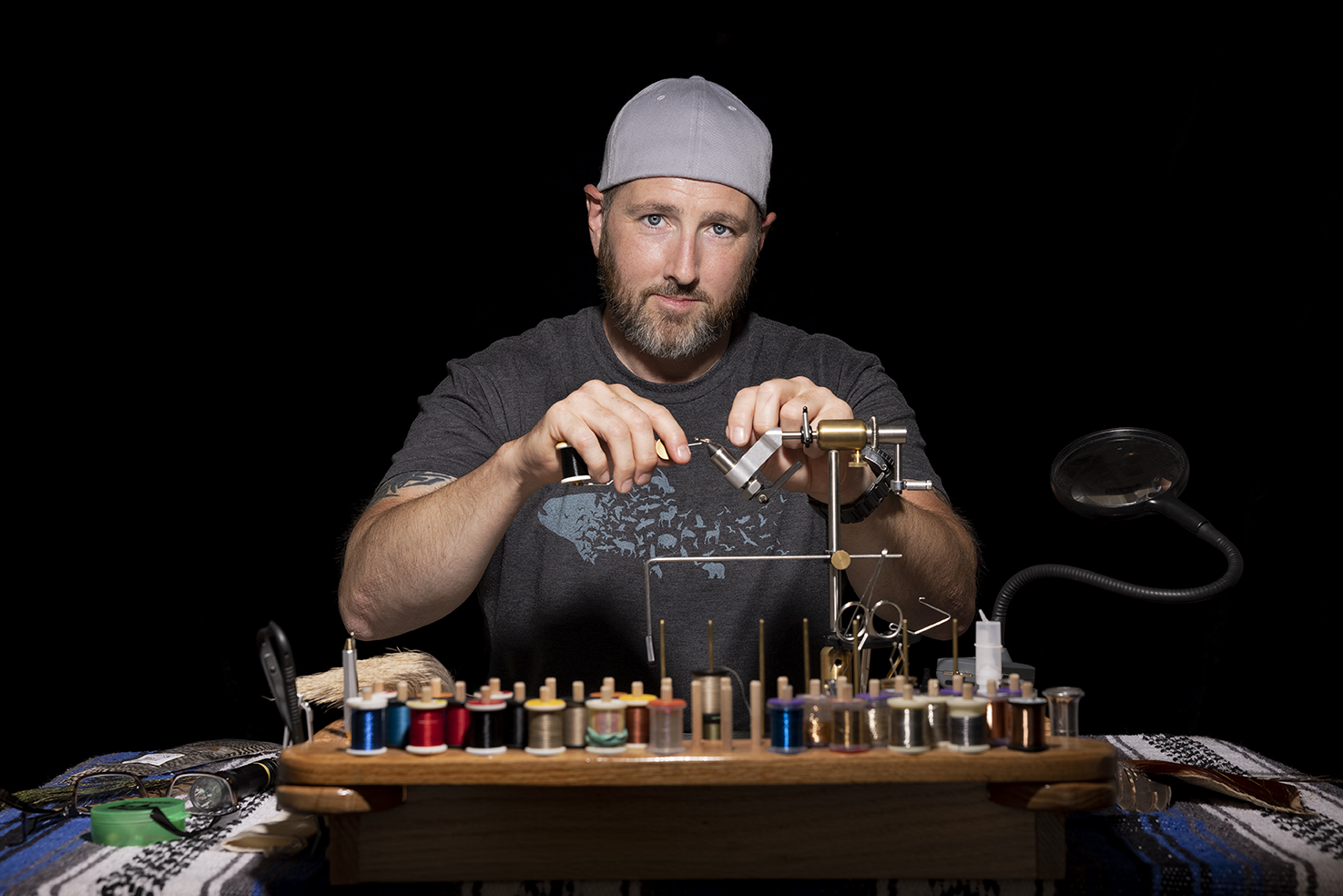
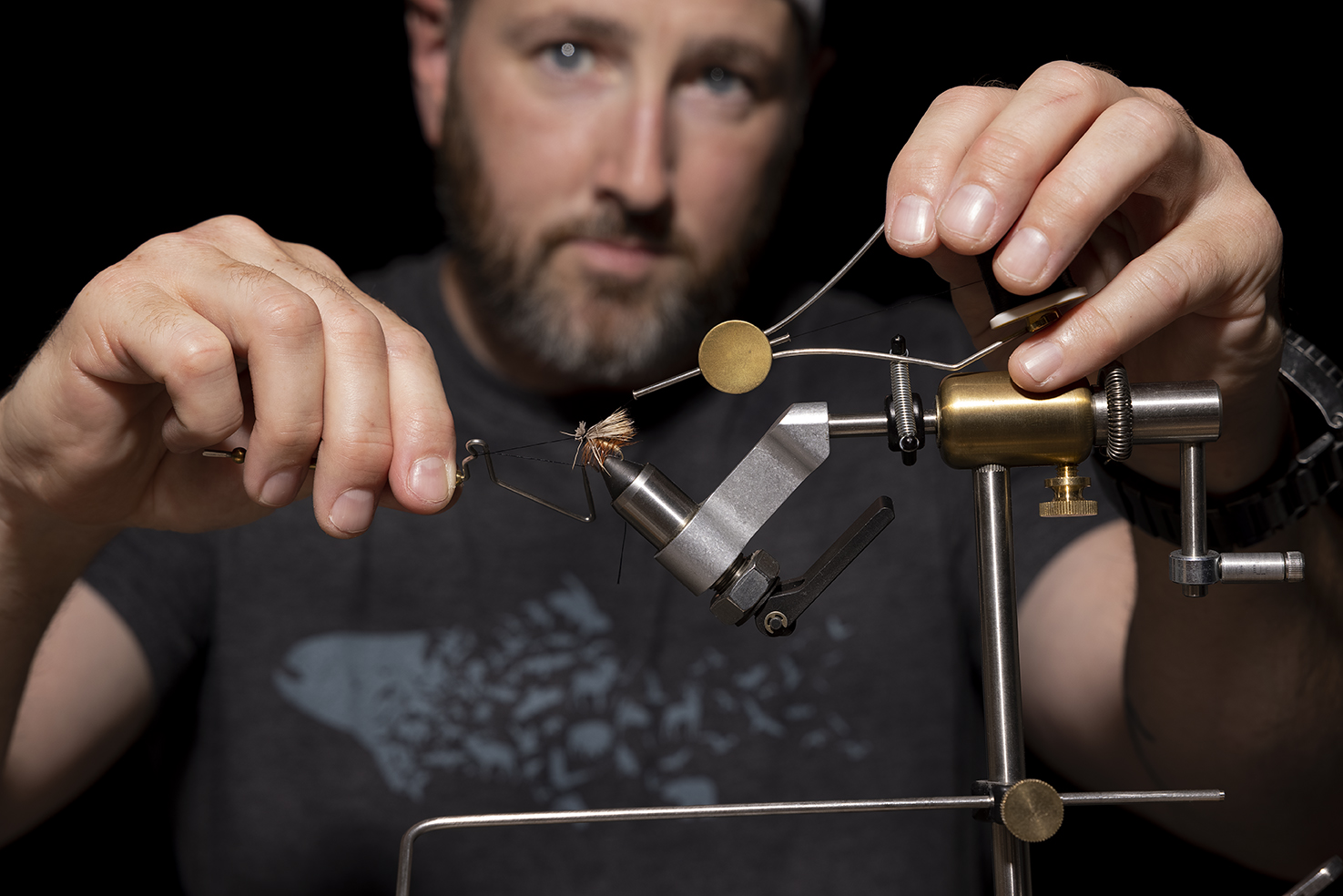
Indoor Lighting Breakdown: Two-Light Setup
After firing off a few shots, Ian wants to relocate his key light to the right side of his subject. He then pulls in another FJ400 for a fill light and modifies it with a 7-foot silver umbrella with diffusion. With this additional light, Ian is able to achieve more depth in his photograph.
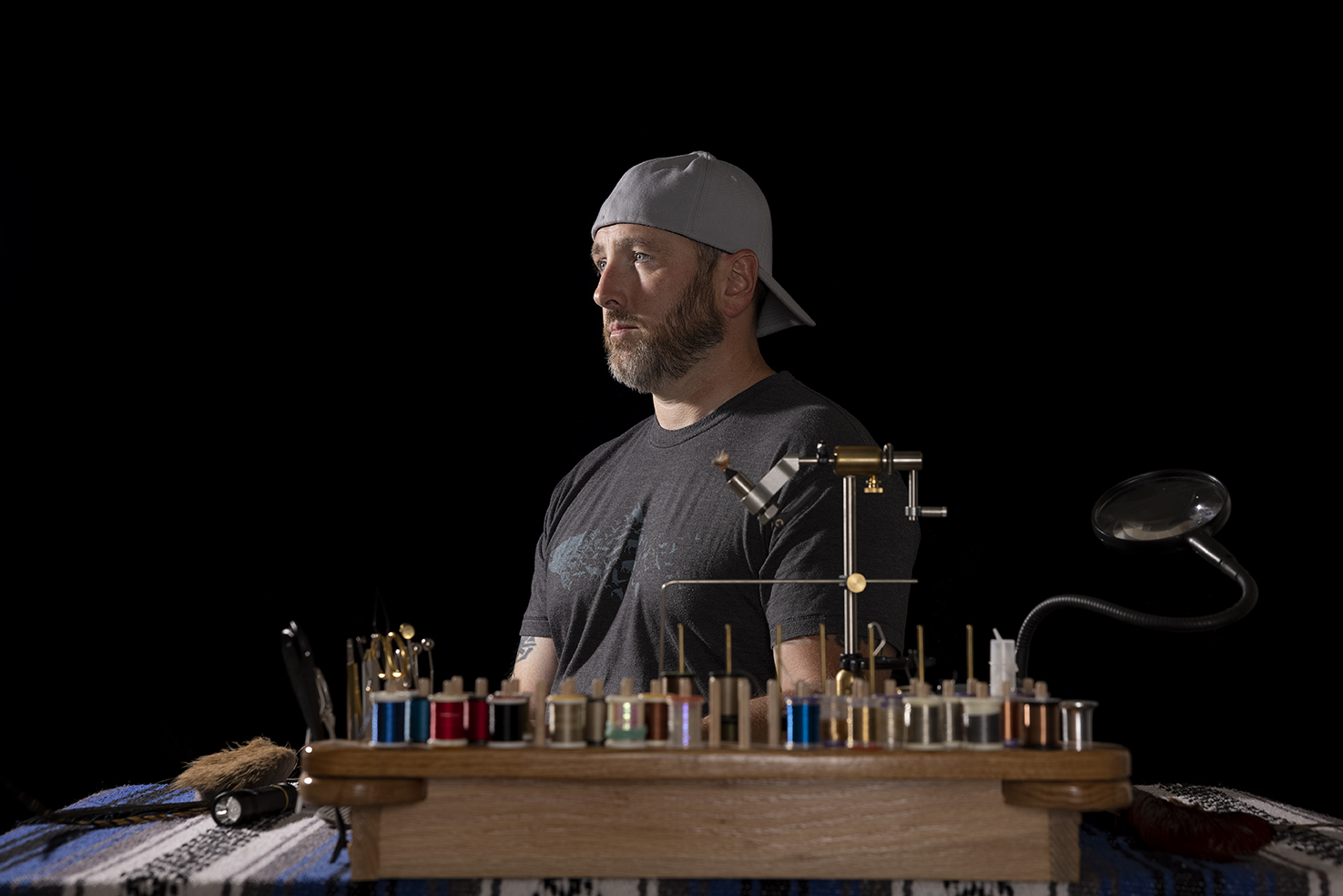
Setting the Scene: On-Location Outdoors
When arriving at the mountains for his outdoor on-location shoot, Ian takes advantage of the back-lit look the stream is offering. He decides to shoot upstream into the direction of the sun. He places the FJ400 across the river and directs it back onto his subject. Working with artificial light in this environment adds more depth to the shot and his surroundings.
Natural Light vs Artificial Light Outdoors
One of the key differences when shooting natural light versus artificial light is with natural light you have to increase your ISO to get the correct exposure. Using strobes, Ian is able to photograph this scene at ISO 250 and capture the sunlight coming in as well as the light from the flash. When he switches over to just natural light, he bumps his ISO to 3000. Because his subject is backlit Ian loses some of the definition in his subject’s face.
One drawback to using strobes in this situation is that due to the sync speed of his camera Ian is not able to shoot at a higher shutter speed to freeze the action of the fishing rod, making the fishing line appear blurry. To fix this Ian switches his setting on the FJ400 from Manual Mode to High-Speed Sync. This allows him to increase his shutter speed past his camera’s sync speed of 1/250th of a second, and really freeze the action of the fly fisherman. Using High-Speed Sync allows Ian to use the flash to add definition to the subject’s face while also freezing the movement of the rod.
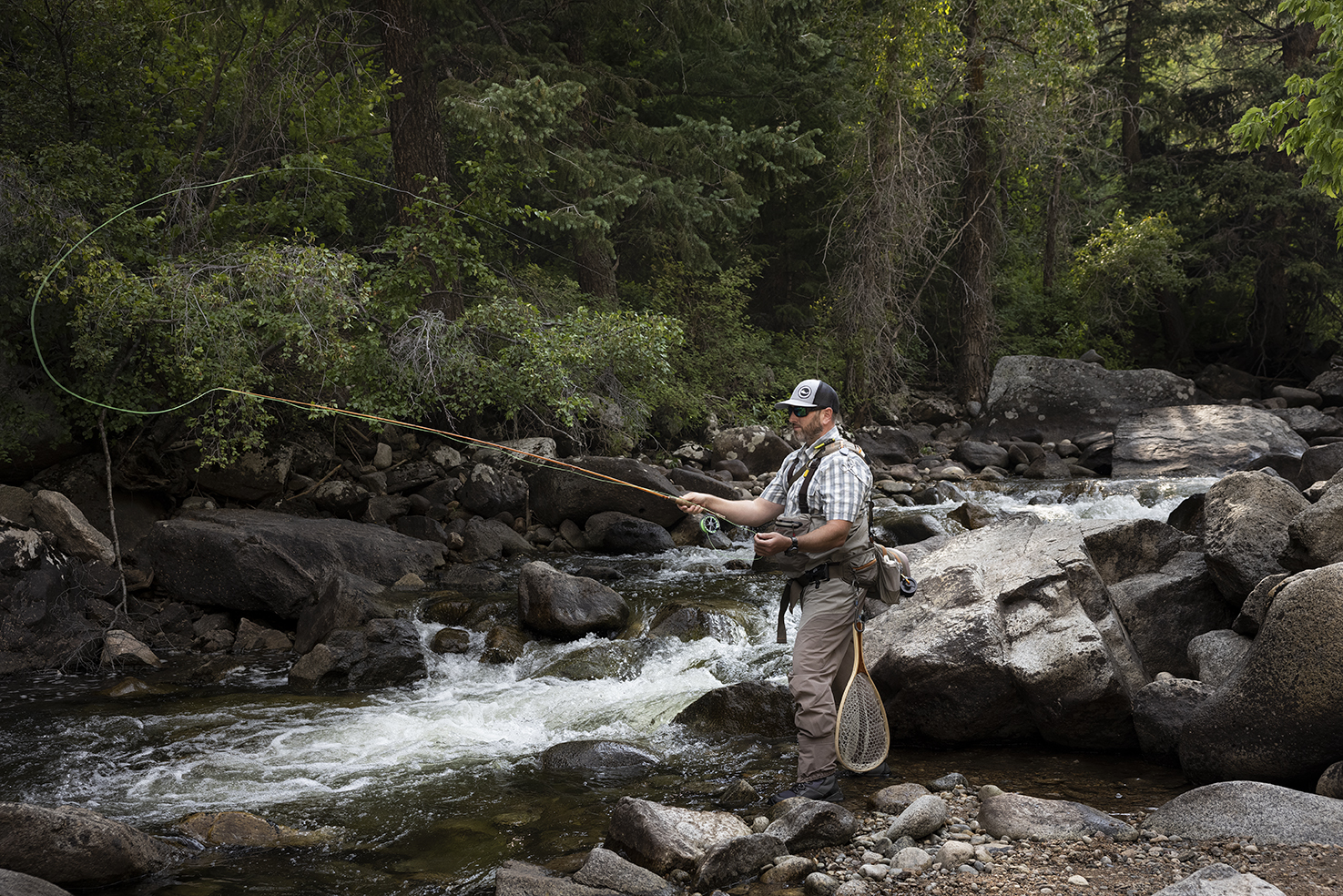
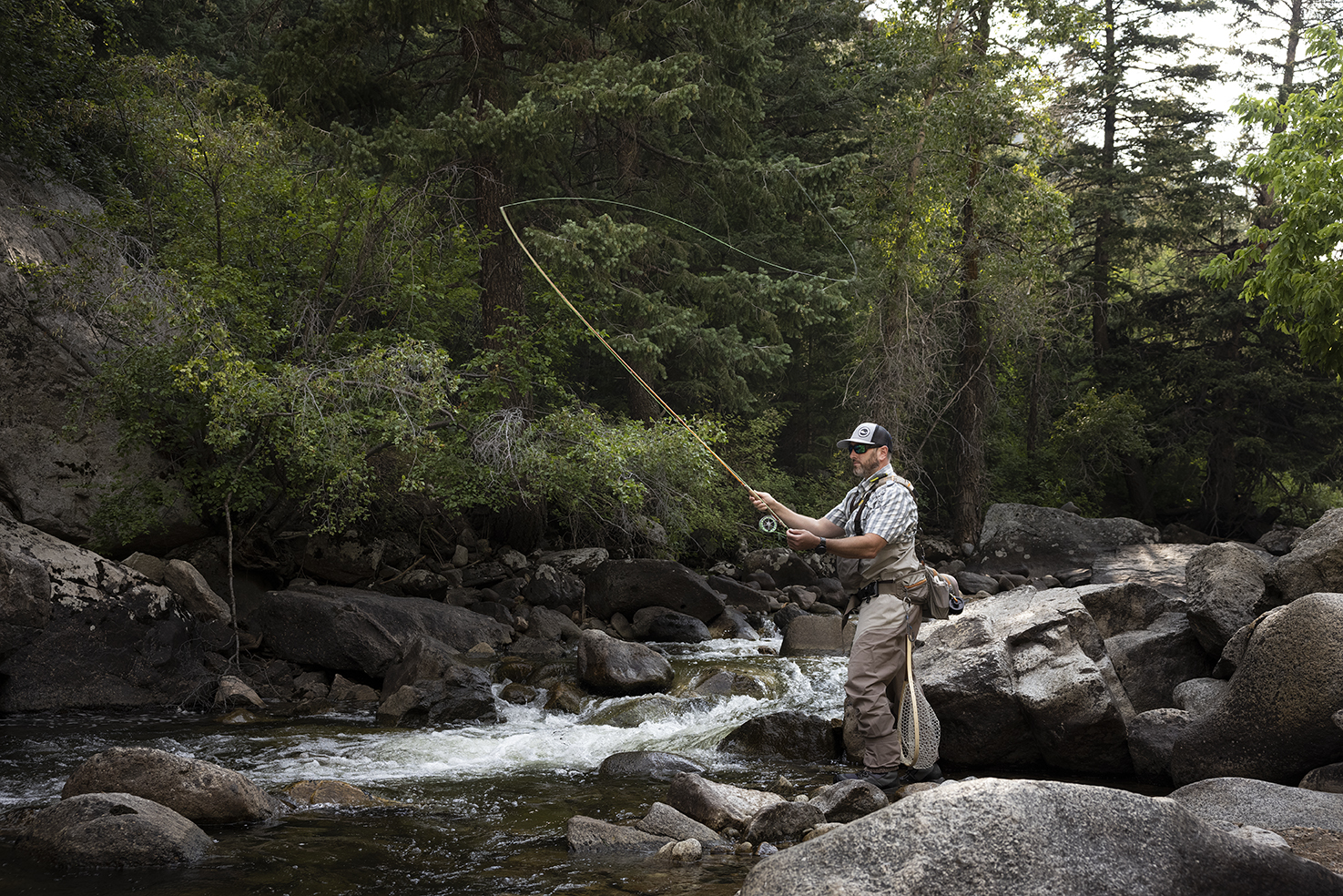
On-Location Portrait Shots In The Mountains
In this instance, Ian wants to balance the lighting with a 43-inch Deep Silver Umbrella with a white diffusion panel. He places the diffused light close enough to the subject to mimic the feel of the natural light while illuminating the rocks and the water behind his subject.
In this instance, Ian wants to balance the lighting with a 43-inch Deep Silver Umbrella with a white diffusion sock. He places the diffused light close enough to the subject to still mimic the feel of the natural light, while also lighting up the rocks and the water right behind his subject.
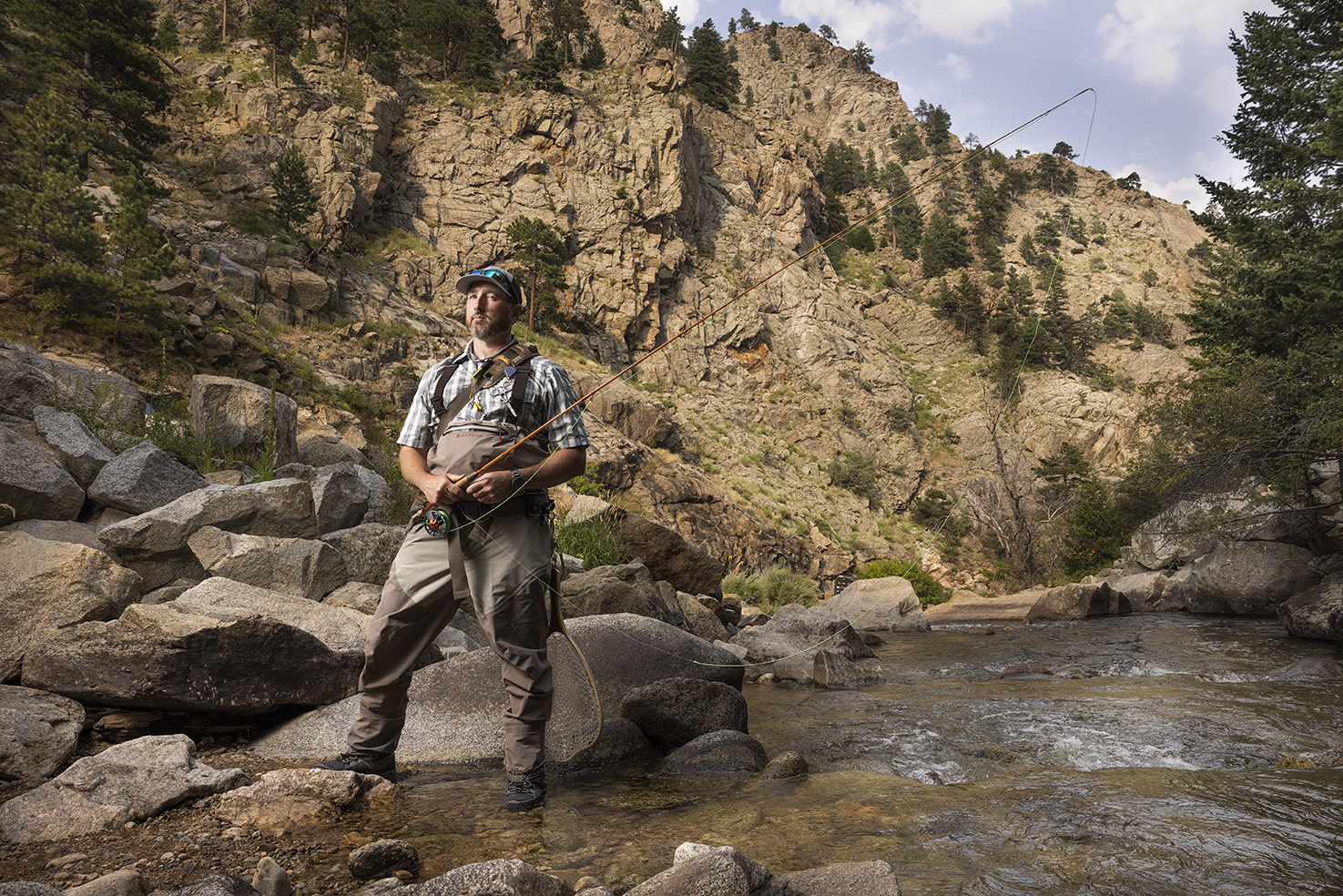
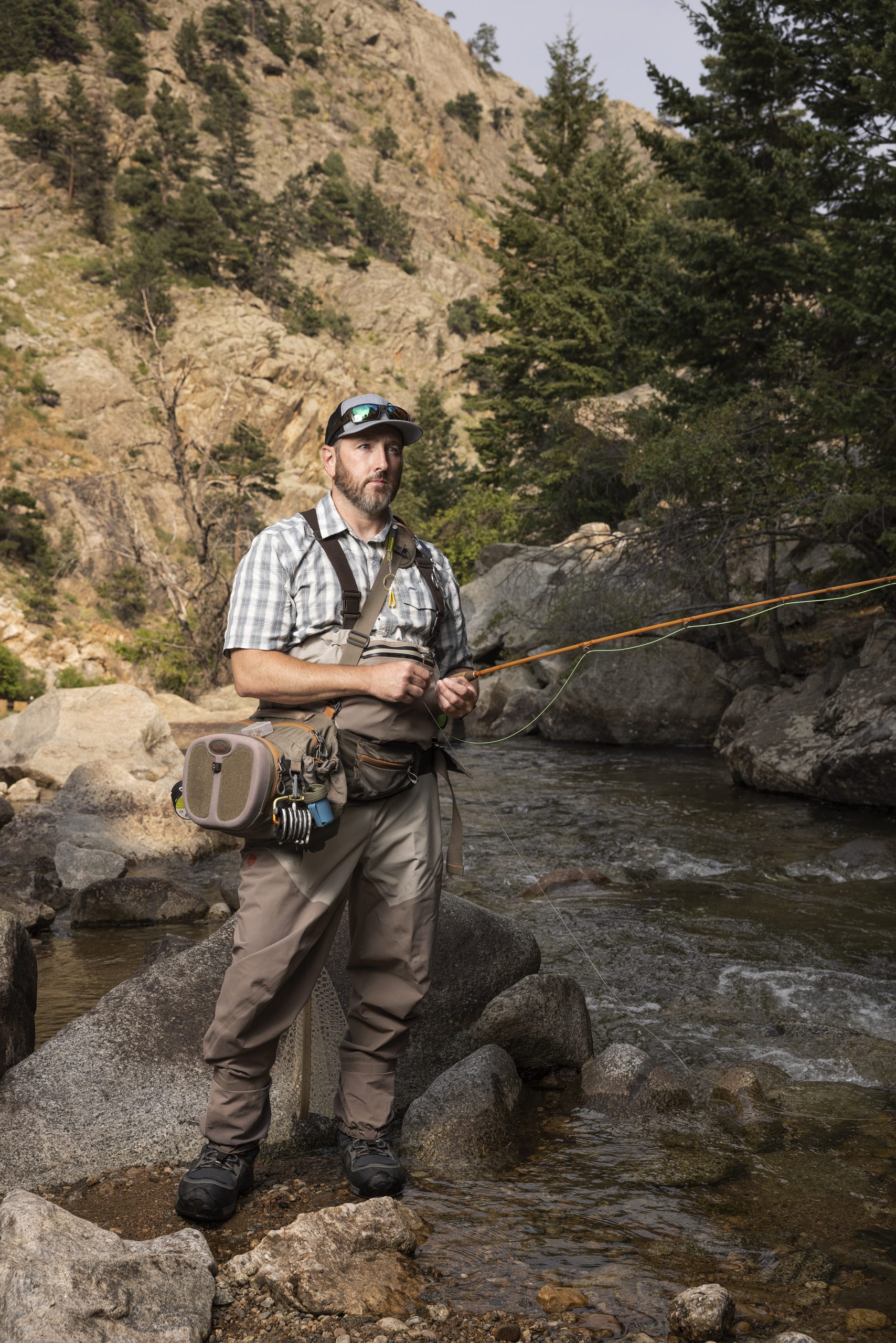
Takeaways – On-Location Portraits
Lighting on-location portraits involve the use of portable, yet versatile gear. As you can see from Ian’s on-location shoot, off-camera flash combined with light modifiers creates a very different look compared to natural light. The lights are daylight-balanced and meant to complement the natural light. Depending on your power settings and how you’re utilizing off-camera flash, you can create a wide range of images both indoors and outdoors giving you the freedom to work wherever you would like.
Learn how Ashley uses the FJ400’s front and rear curtain sync functions to create light trails here.
Lighting Gear in Action

Original FJ400 Strobe with AC/DC Battery (400Ws)4700

Original FJ400 Strobe with AC/DC Battery (400Ws)4700





You must be logged in to post a comment.